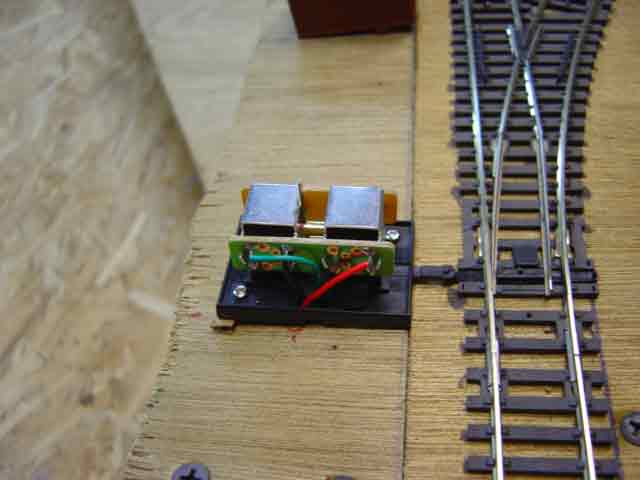--more--

Observe that the plunger has been previously "thrown" to the left, thereby moving the vertical connecting rod to the left. Accordingly, the vertical connecting rod has dragged the sliding arm in the base plate to the left (the "retracted" position). The sliding arm in the base plate has pulled the sliding element of the point to the left (the "straight track" side), thus moving the point rails so that a train will be guided to the right, onto the curved track.
Note: the two movable rails of the point are called "switch points" in America. In Britain, the moving rails are sometimes called "point blades".
In Britain, the entire assembly of straight and curved track, including the stationary rails as well as the moving rails, is called a "point", or sometimes "a set of points". In America, the entire assembly is called a "switch" or a "turnout". Hornby, a British company, follows the British usage.
Go to top of page